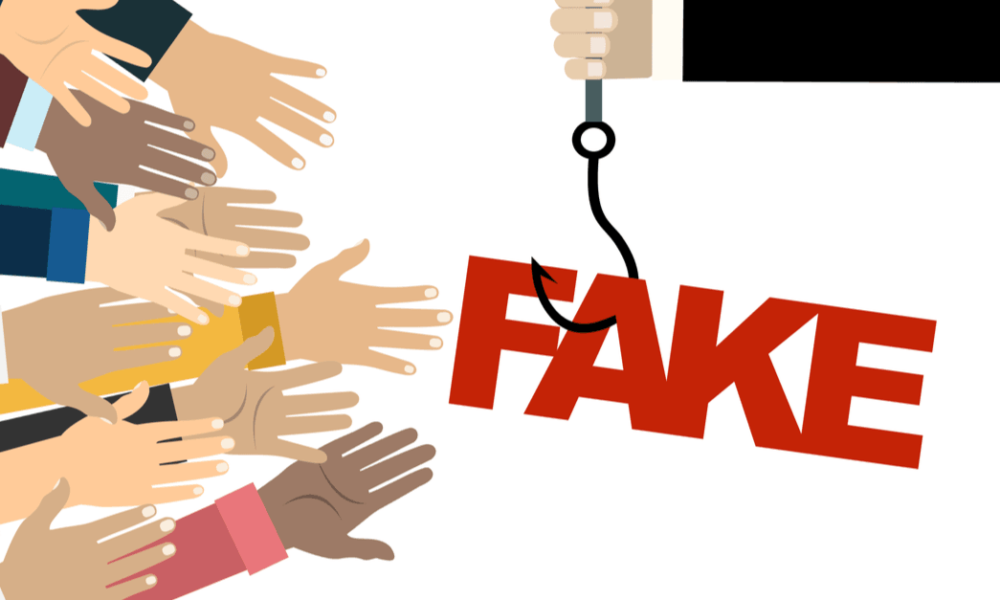
How to tell if an online article is real, fake or a scam
Fake websites, also known as phishing sites, are designed to steal your personal information or infect your device with malware. They can appear as standalone sites, popups or unauthorized overlays on legitimate websites using clickjacking.
Fraudsters send scam emails or text messages with links that lead to fake online shops that look real. These sites are designed to steal your passwords or personal or financial information or infect your devices with malware.
Poor design
Fake websites are created for a single purpose – to trick unsuspecting web users. They use social engineering to lure you into divulging personal information or downloading malware that disrupts devices and data. They may mimic official government sites, banks, or cellphone companies. They also leverage emotions like fear or urgency to manipulate you into acting without thinking critically.
Crooks build fake websites in a variety of ways, from standalone sites to popups or unauthorized overlays on legitimate websites (clickjacking). Their goal is almost always the same: lure you into relinquishing your personal and financial information or download malware to compromise your devices and data.
One of the best indicators that a website is fraudulent is poor design. Look for pixelated images and graphics, inconsistent branding and logos, and awkward layouts. A ‘Contact Us’ page that doesn’t list a real company address or phone number is another red flag. These are the type of details that Is Legit or Scam Reviews can’t afford to overlook as they attempt to blend in with genuine businesses.
Awkward layouts
A fake website can be spotted by checking the company’s contact information on their site. If they provide only an email address or a generic contact form, it is likely that they are not a real business.
Another warning sign is if the website is difficult to navigate. If it is poorly designed or cluttered, this can be a red flag that the website is fraudulent.
Also, look for pixelated images or low-quality graphics on the website. A reputable website should use professional-quality images and be easy to navigate.
It is important to know how to spot a fake website in order to protect your personal and work information, including financial data, logins for email and social media and other sensitive information. Red Points offers a domain takedown service that helps brands remove websites that impersonate them and recover revenue that should be theirs. Learn more here..
Poor spelling and grammar
Fake websites are created by scammers to trick you into sharing your sensitive information, downloading malware, or buying nonexistent products. They often imitate the look of a real website to appear legitimate and may include fake URLs, favicons, and security certificates. They also use phishing techniques to send you a link via email or text message. Look for misspellings, capitalization, and poor grammar to spot a suspicious site.
Legitimate sites will have writers and editors to ensure that their content is free of errors. If a website has numerous spelling and grammar mistakes, it’s likely not a safe place to enter your personal or financial information. You should also be cautious if a website requires you to pay for goods using non-reversible payment methods like wire transfers or cryptocurrencies. If you find a fake website, be sure to report it so that others can avoid falling victim to the same trap. For example, you can use Google’s reporting tool to let them know about the site.
No contact information
Fraudsters use fake websites to steal passwords and personal or financial information. These illegitimate sites mimic banks or cell phone companies in order to lure you into revealing sensitive information, or they exploit vulnerabilities to install malware on your computer that can record your keystrokes or spy on your browsing habits. You can check a website’s security by looking for a padlock icon and the HTTPS prefix in its web address. However, fraudsters can easily copy security logos like those from DigiCert and Verisign to fool unwary visitors.
To avoid fake websites, always check the source of a link — search results, social media posts, or even messages from friends — before clicking. Then, look at the quality of visuals and language, paying attention to misspellings or awkward grammar. And lastly, check the site’s security with a trusted website checker or Google’s Safe Browsing tool. If you see a security warning, it’s best to stay away from the site.